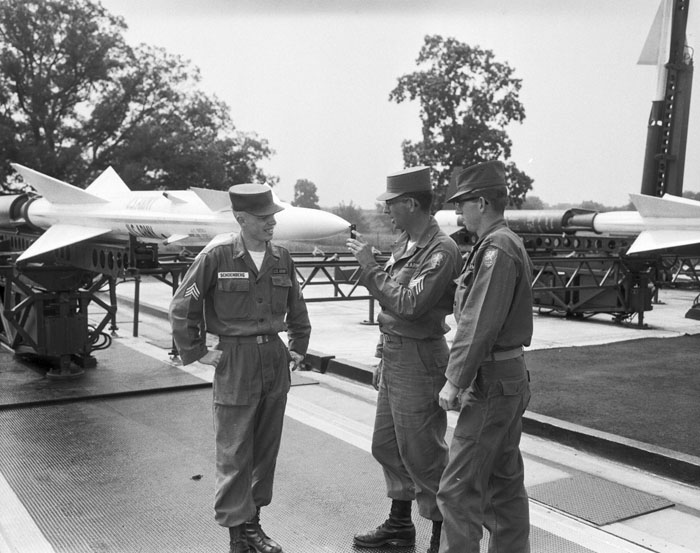|

|
| NIKE MISSILE BASE |
Despite the arrest of the Moonshine King, business continued. In Disco the Yellow Canary served as a popular "blind
pig" in the area. (Today the establishment is McClenaghan's.) Anyone who wanted to slake their illegal thirst for alcohol
could come to Disco, known as "Whiskey Center" for a half-barrel of beer for $8.00. Permits were required for anyone
who wanted to even sell soft drinks in the township.
A pall of grief set over Disco in November 1934 as Nancy, a community horse and favorite with area children , died at
age 40.
Lightning struck again on August 28 1936, following a telephone lead into the Switzer store and igniting papers near the
telephone. In the heavy downpour men and women alike ran a bucket brigade and collected water from the rain to extinguish
the fire. Damage was estimated at $2,000.
In 1939, boxing champ Joe Louis bought the 500-acre Spring Hill Farm in today's River Bends Park where he liked to relax
and do his road work. During the 1940s, Shelby Township began its shift from a rural area to a suburban community. The area
between Shelby Road and Van Dyke south of 21 Mile Road were platted for development in 1941, and Russel and Messmore streets
were platted in 1942.
During World War II the Packard Proving Grounds was used by Chrysler Corporation for testing tanks. By 1948, the township
built a new township hall at 49960 Van Dyke, which would later house police and fire personnel. It still stands today as a
jewelry store on the east side of Van Dyke. Packard constructed a facility at the Proving Grounds in 1951 that would allow
the company to manufacture jet engines for the U.S. Air Force. Switzer's store lived on through the 1950s as George Wellhausen's
General Store.
When Packard went out of business later in the decade, aircraft manufacturer Curtiss-Wright purchased the Proving Grounds
in 1958. Curtiss-Wright hoped to turn the facility into a commercial race track to play host to events like the Indy 500,
but was unsuccessful.
Protection services for residents of the township moved beyond bucket brigades and country policing in the 1950s, with
the creation of fire and police departments.
On Feb.16 1953, Shelby Township voters approved a millage that created the Shelby Township Volunteer Fire Dept. with an
original contingent of 45 men. The Dept. took possession of its first new truck in 1954. Clyde Schmidt was named the department's
first chief in November 1957 and in May of 1958, the department went full time. " This was the entire department,"
said Capt. Richard Meitz, looking at a photo from the late 50s. Meitz is the son of Wilfred Meitz and nephew of Marvin Meitz,
two of the township's original firefighters.
"Around that time, there weren't a whole lot of fires," Meitz said. "It was usually grass fires, although
they did have an occasional house or barn fire."
Meanwhile the Shelby Township Police Dept. was formed on May 18,1954. Robert W. Smith was hired as the first officer on
Aug.30,1954 and would later become chief. A second officer was hired later in the year and a third in the fall of 1955. By
1960, however, the dept. grew to five full time officers and eight special officers.
And then there was protection of another sort. In 1955, construction was also completed at a U.S. Army Nike anti-aircraft
missile battery in what is today River Bends Park. Officially designated Battery B-516th AAA Missile Battalion, the Utica
Nike Site, the site was designed to shoot down enemy aircraft in the event the cold war escalated and the U.S. went to war
with the Soviet Union.
(Source Newspaper-October31,1999, By Jon Ottman)
|

